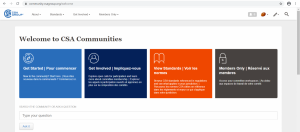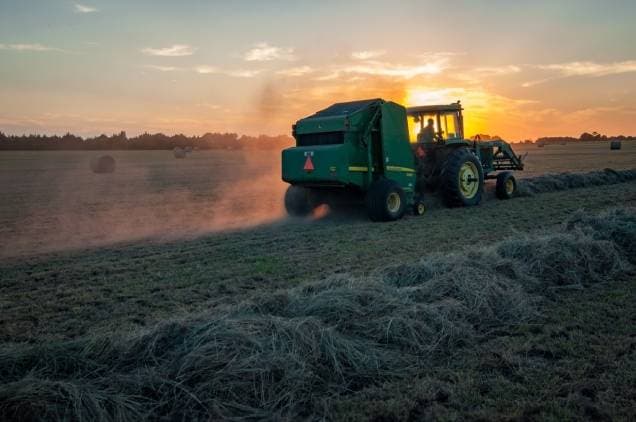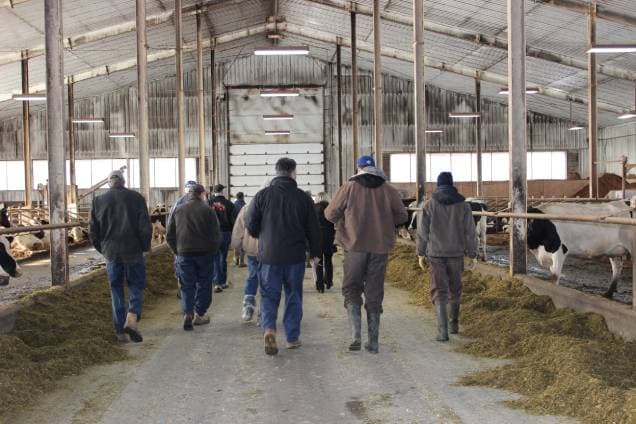 First aid is a means of providing care to an injured or ill person until help arrives. First aid training gives a person the skills and confidence to be able to help the ill or injured person as well as learn what could happen and apply prevention measures before it does.
First aid is a means of providing care to an injured or ill person until help arrives. First aid training gives a person the skills and confidence to be able to help the ill or injured person as well as learn what could happen and apply prevention measures before it does.
You never know when you may need to respond to an ill or injured person while at home, in the park, on the highway, at the market, or even on farm. Farming is one of the most hazardous occupations as workers are exposed to confined space, gas, handle animals, exposed to zoonotic disease, high stress, extreme weather conditions, and machine and equipment hazards such as run over or entanglement.
Did you know that Nova Scotia Occupational Health and Safety has its own set of First Aid Regulations that outlines the first aid requirements at the workplace to help you prepare for a potential emergency requiring first aid? The First Aid Regulations outline the employer’s responsibilities in providing and maintaining first aid supplies, services and trained first aiders. This includes a means of safe and timely transport to emergency care. The driver should not to be the caregiver during transport, another person should assist.
Training Requirements:
- The farm is to pay for the first aid course and the workers time while in the course at the same rate as if they were conducting their normal work duties.
- Persons working independently who have no one available to give first aid must be trained in emergency first aid.
- 1-19 workers employed regularly on the farm, requires at least one emergency first aid certificate.
- 20-99 workers employed regularly on the farm, requires at least one Standard First Aid Certificate.
- 100 or more workers employed regularly on farm, requires at least one Advanced First Aid Certificate.
First Aid Records:
When a first aider opens a first aid kit and uses the contents of the first aid kit to treat an ill or injured person at the worksite, a first aid record must be completed and the written record kept for 5 years after the date of injury. The first aid record is not a public document and the privacy of the injured person must be protected. First aid records may be included in your first aid kit, if not click here for a template.
The first aid record must include:
- name of the injured person
- date and time of injury
- location and nature of the injury to the person
- time first aid administered
- first aid treatment provided
- name of first aider or person providing treatment and
- name of person the injury was reported
Location of First Aid Supplies and First Aiders:
- First aid kits should be readily available during all working hours and easily accessible.
- Post the names of the available first aiders and their phone number in obvious highly visible locations on farm property and in equipment and/or vehicle cabs.
- Keep supplies clean and dry.
- Include first aid kits with your monthly work site inspections. Check to ensure all contents are present and they are not expired.
- Check the contents of first aid kits with sections 14, 15 & 16 of the first aid regulations.
- Recommend printing a copy of the contents and adding to the back of the kit for easy reference or including as part of your inspection checklist.
First aider Responsibilities:
- Have access to and control over the correct first aid kit and first aid room, if applicable.
- Be available to treat an ill or injured person without delay.
- Wear and use personal protective equipment when providing care as to prevent exposure to infectious disease.
Remote Location Plan:
A remote location is a place where it would take more than 30 minutes of surface or road travel time in one direction to reach an emergency care facility that is open during working hours.
If you have a remote location, prepare a written first aid remote location plan.
Include the following in your plan:
- Correct number of trained first aiders at the required level.
- 20 workers or less at the location, one person hold standard first aid certificate OR at least 30% of the workers hold emergency first Aid certificate.
- See requirements listed above.
- Correct number and size of first aid kits.
- List of first aiders with their contact information.
- Transportation method for the ill or injured person.
- Communication with and from remote locations.
- Reflect the scope of work performed at the remote location.
- Consult with the Health and Safety Committee or Representative in the development of the plan.
Exceptions to having a remote first aid plan are: no worker spends more than 10% of their time there over a 4-week period; spend more than 10% but less than 25% of their time, over a 4-week period if the safety of the location is adequately assured.
CSA Standard Available:
Did you know there is a CSA standard for first aid training and first aid kits? The CSA Standard for First Aid Training is CSA Z1210 and the CSA Standard for First Aid Kits is CSA Z1220.
If you are interested in checking out the CSA Standard for First Aid Training and First Aid Kits, you will need to access your CSA Communities account. If you do not have an account check out this post to learn how to create an account and access standards or join the farm safety advisor on October 15th from 11:30am- 12:30pm to walk you through creating a CSA Communities account and navigating the platform. To register for the webinar, click here.




